Gansu and Silk Road
Situated along the historic trading network Silk Road, Northwest China's Gansu province served as a crossroads for the country and Central Asia. The temples, Buddhist art, and tombs left behind by merchants, travelers, and artists made Gansu one of the most culturally rich provinces in China.
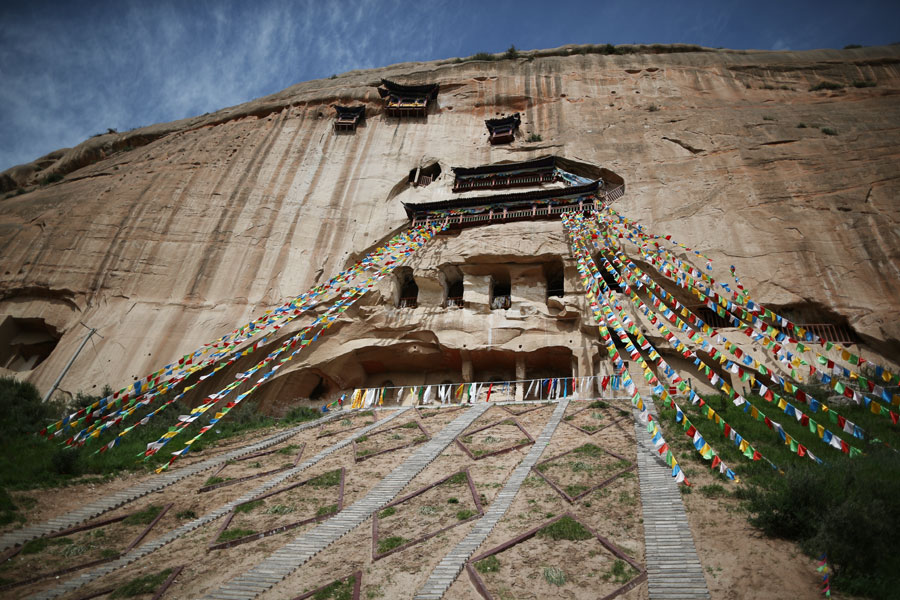
The Matisi Grottoes cover about 100 square kilometers in Sunan, a Yugu ethnic autonomous county 600 kilometers from Gansu's provincial capital Lanzhou. Mati means "horse hoof" and si means "temple". The first caves were dug about 1,600 years ago. Most were chiseled into temples, such as the North Matisi Grottoes carved into a 100-meter-high cliff. The 21 caves are arranged in seven stories. Visitors climb narrow stone stairs to see the top grotto's Bodhisattva Lyudumu in a shrine. Every story contains statues.[Photo by Chen Xi/China Daily]
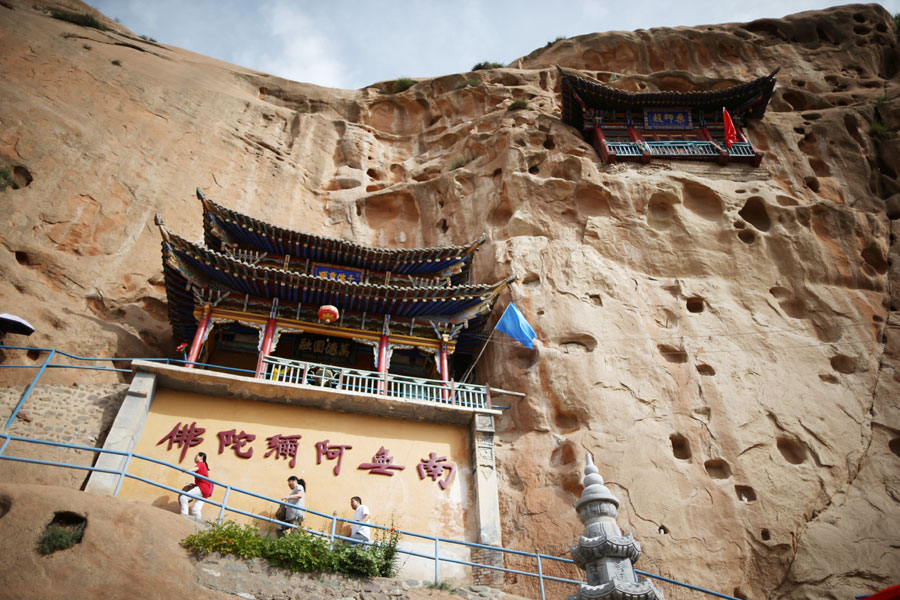
The Matisi Grottoes cover about 100 square kilometers in Sunan, a Yugu ethnic autonomous county 600 kilometers from Gansu's provincial capital Lanzhou. Mati means "horse hoof" and si means "temple". The first caves were dug about 1,600 years ago. Most were chiseled into temples, such as the North Matisi Grottoes carved into a 100-meter-high cliff. The 21 caves are arranged in seven stories. Visitors climb narrow stone stairs to see the top grotto's Bodhisattva Lyudumu in a shrine. Every story contains statues.[Photo by Chen Xi/China Daily]
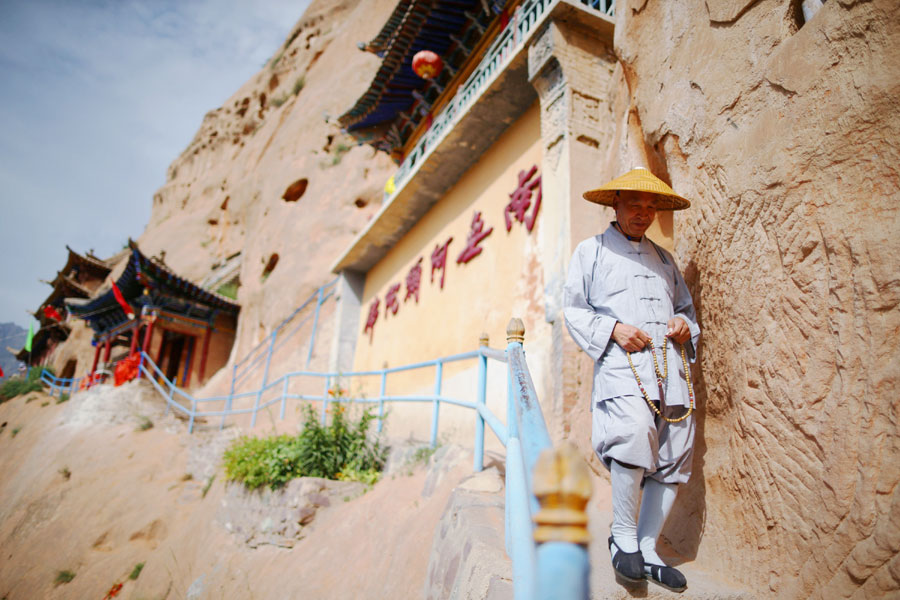
The Matisi Grottoes cover about 100 square kilometers in Sunan, a Yugu ethnic autonomous county 600 kilometers from Gansu's provincial capital Lanzhou. Mati means "horse hoof" and si means "temple". The first caves were dug about 1,600 years ago. Most were chiseled into temples, such as the North Matisi Grottoes carved into a 100-meter-high cliff. The 21 caves are arranged in seven stories. Visitors climb narrow stone stairs to see the top grotto's Bodhisattva Lyudumu in a shrine. Every story contains statues.[Photo by Chen Xi/China Daily]
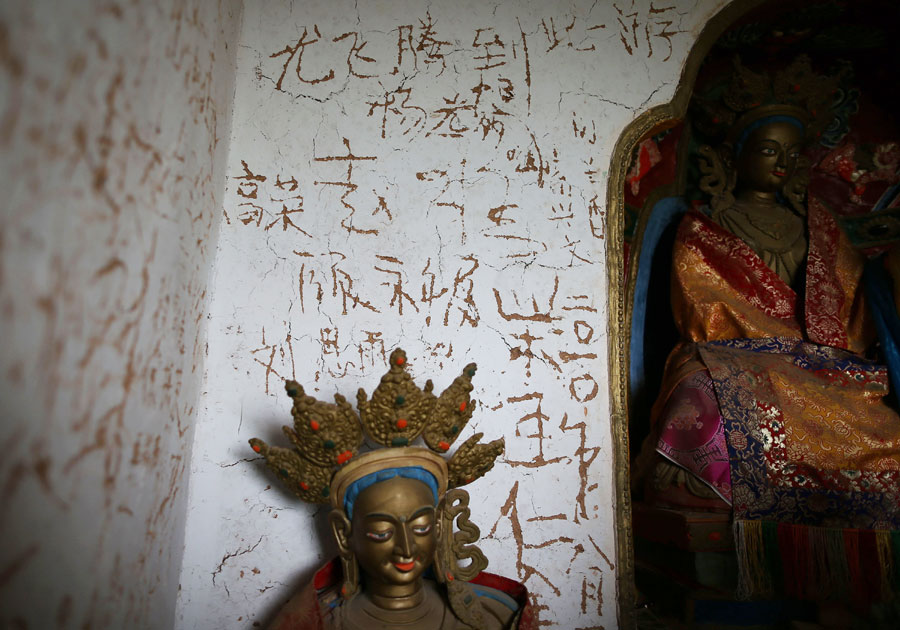
The Matisi Grottoes cover about 100 square kilometers in Sunan, a Yugu ethnic autonomous county 600 kilometers from Gansu's provincial capital Lanzhou. Mati means "horse hoof" and si means "temple". The first caves were dug about 1,600 years ago. Most were chiseled into temples, such as the North Matisi Grottoes carved into a 100-meter-high cliff. The 21 caves are arranged in seven stories. Visitors climb narrow stone stairs to see the top grotto's Bodhisattva Lyudumu in a shrine. Every story contains statues.[Photo by Chen Xi/China Daily]
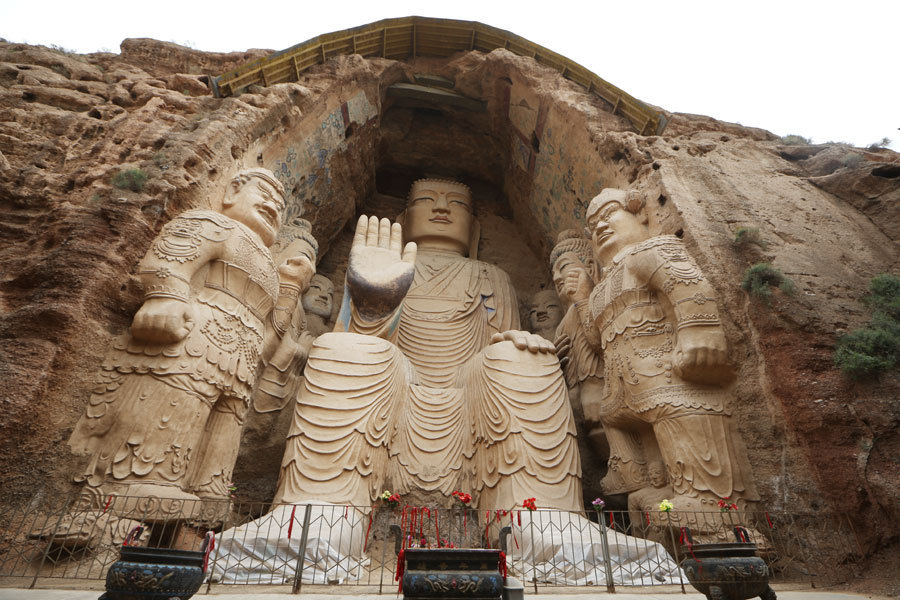
The Tiantishan Grottoes in central Gansu province's Wuwei county were dug about 1,600 years ago. Tianti means "ladder to the sky" and shan means mountain. The site is a honeycomb of 17 caves in three layers. The biggest cavern is 30 meters high, 19 meters wide and 16 meters deep. It houses a Sakyamuni statue that is 15 meters high and 10 meters wide, and smaller peripheral caves and murals. Experts have collected some of the site's relics for restoration. The local government built a 10-meter-high dam to protect the caves from water damage. Visitors can view the big Buddha statue from the top of the dam and take ladders down to the statue's feet.[Photo by Chen Xi/China Daily]
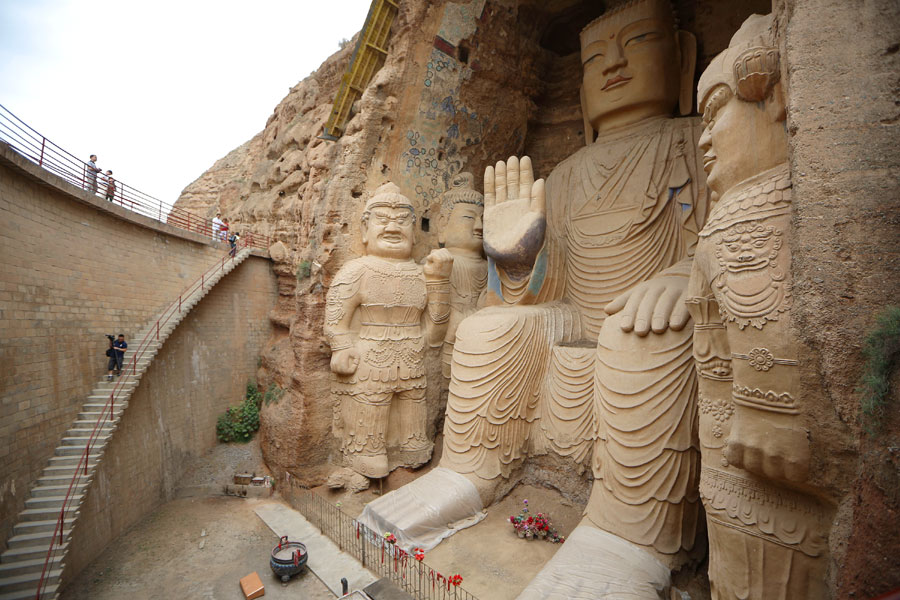
The Tiantishan Grottoes in central Gansu province's Wuwei county were dug about 1,600 years ago. Tianti means "ladder to the sky" and shan means mountain. The site is a honeycomb of 17 caves in three layers. The biggest cavern is 30 meters high, 19 meters wide and 16 meters deep. It houses a Sakyamuni statue that is 15 meters high and 10 meters wide, and smaller peripheral caves and murals. Experts have collected some of the site's relics for restoration. The local government built a 10-meter-high dam to protect the caves from water damage. Visitors can view the big Buddha statue from the top of the dam and take ladders down to the statue's feet.[Photo by Chen Xi/China Daily]
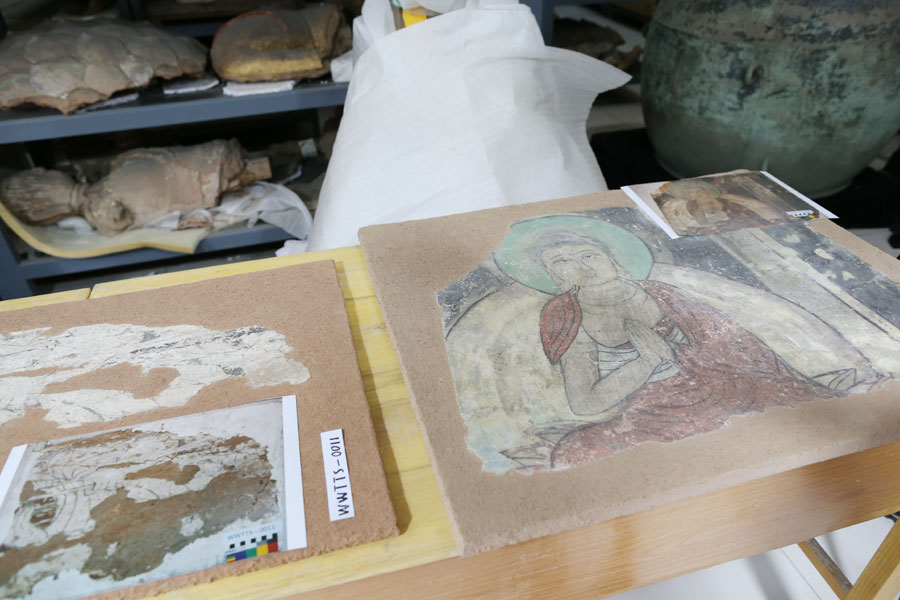
The Tiantishan Grottoes in central Gansu province's Wuwei county were dug about 1,600 years ago. Tianti means "ladder to the sky" and shan means mountain. The site is a honeycomb of 17 caves in three layers. The biggest cavern is 30 meters high, 19 meters wide and 16 meters deep. It houses a Sakyamuni statue that is 15 meters high and 10 meters wide, and smaller peripheral caves and murals. Experts have collected some of the site's relics for restoration. The local government built a 10-meter-high dam to protect the caves from water damage. Visitors can view the big Buddha statue from the top of the dam and take ladders down to the statue's feet.[Photo by Chen Xi/China Daily]
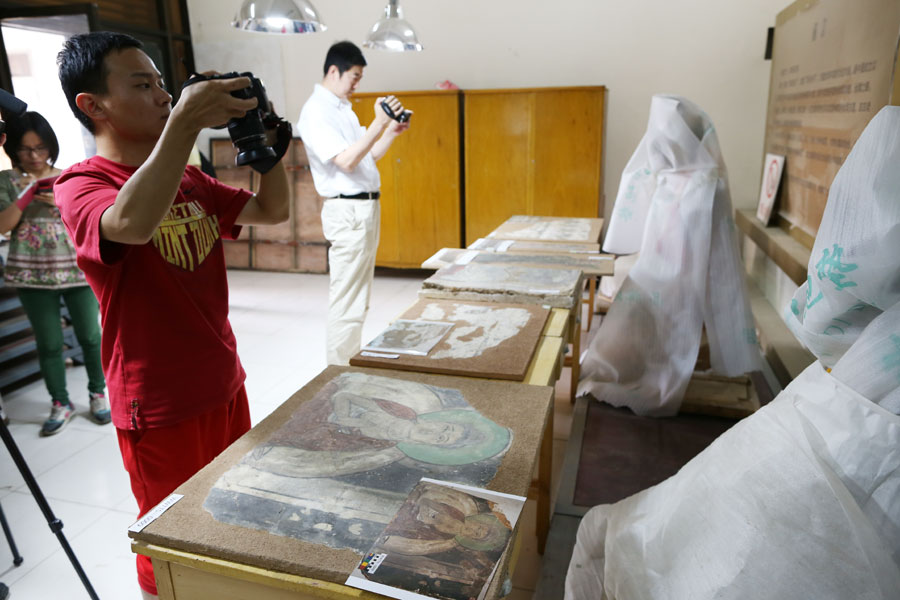
The Tiantishan Grottoes in central Gansu province's Wuwei county were dug about 1,600 years ago. Tianti means "ladder to the sky" and shan means mountain. The site is a honeycomb of 17 caves in three layers. The biggest cavern is 30 meters high, 19 meters wide and 16 meters deep. It houses a Sakyamuni statue that is 15 meters high and 10 meters wide, and smaller peripheral caves and murals. Experts have collected some of the site's relics for restoration. The local government built a 10-meter-high dam to protect the caves from water damage. Visitors can view the big Buddha statue from the top of the dam and take ladders down to the statue's feet.[Photo by Chen Xi/China Daily]
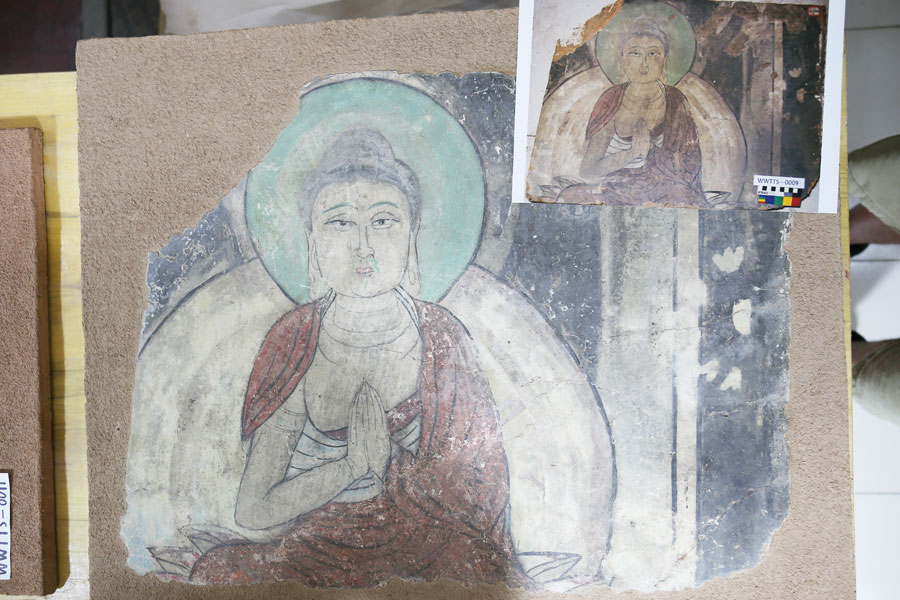
The Tiantishan Grottoes in central Gansu province's Wuwei county were dug about 1,600 years ago. Tianti means "ladder to the sky" and shan means mountain. The site is a honeycomb of 17 caves in three layers. The biggest cavern is 30 meters high, 19 meters wide and 16 meters deep. It houses a Sakyamuni statue that is 15 meters high and 10 meters wide, and smaller peripheral caves and murals. Experts have collected some of the site's relics for restoration. The local government built a 10-meter-high dam to protect the caves from water damage. Visitors can view the big Buddha statue from the top of the dam and take ladders down to the statue's feet.[Photo by Chen Xi/China Daily]
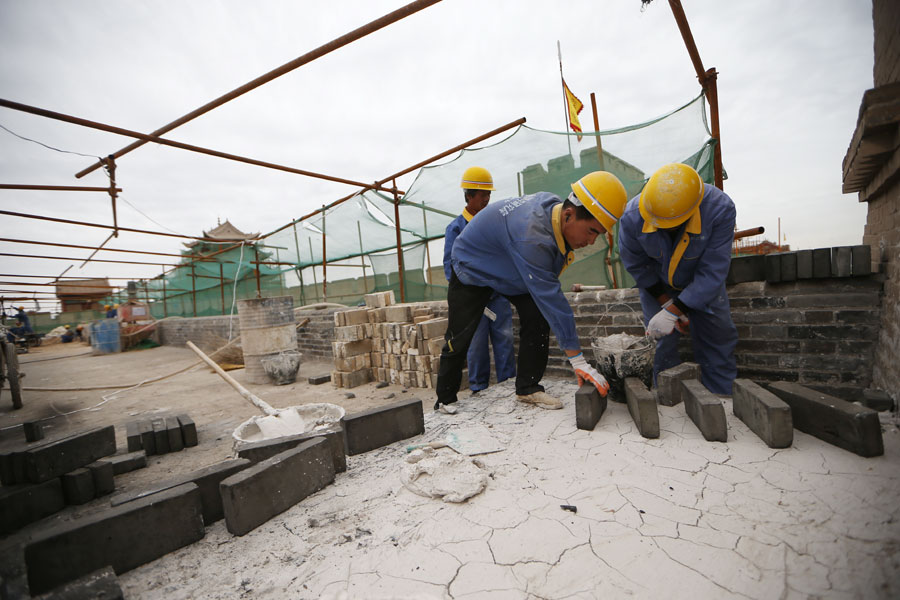
The Jiayu Pass is the western terminus of the Ming Dynasty (1368-1644) Great Wall. It's the bulwark's best-preserved military fortress from any period, and contains a moat and inner and outer cities. Renovations began in 2011 and are expected to wrap up in 2014.[Photo by Chen Xi/China Daily]

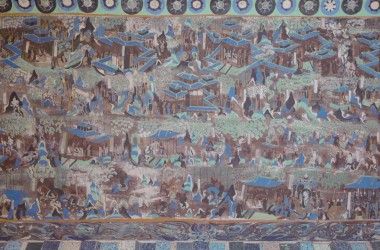 Appreciate Dunhuang Online (XXXIX)
Appreciate Dunhuang Online (XXXIX)
 >
>